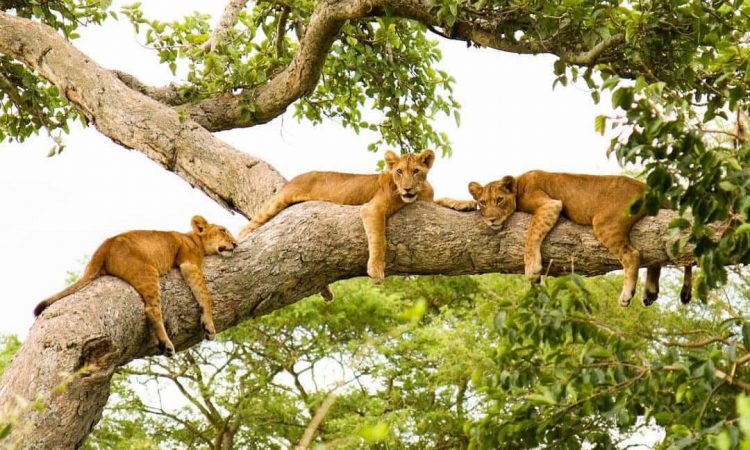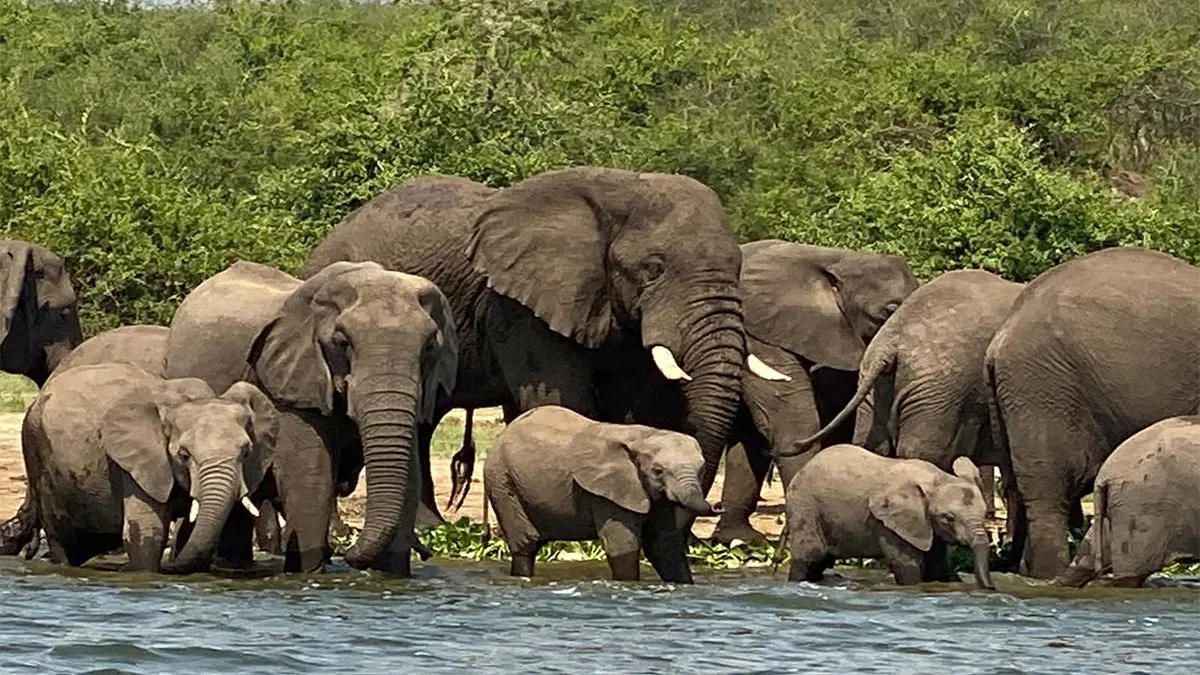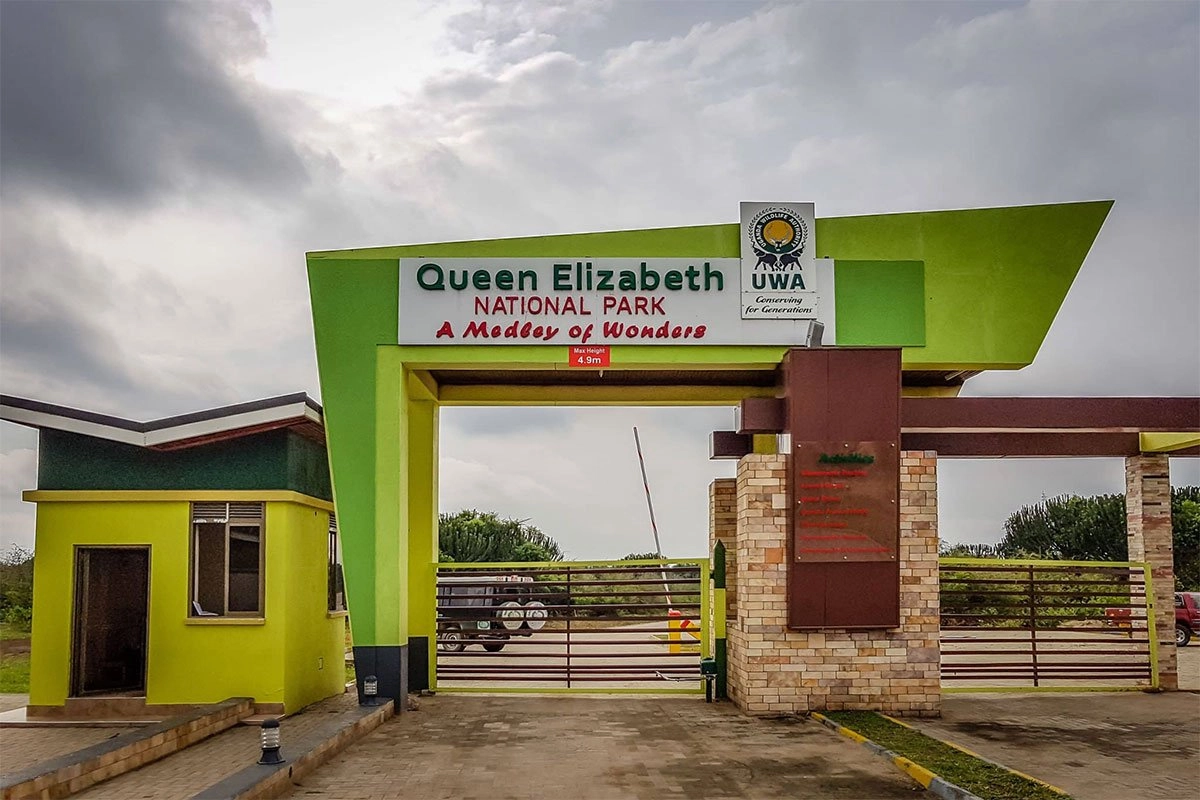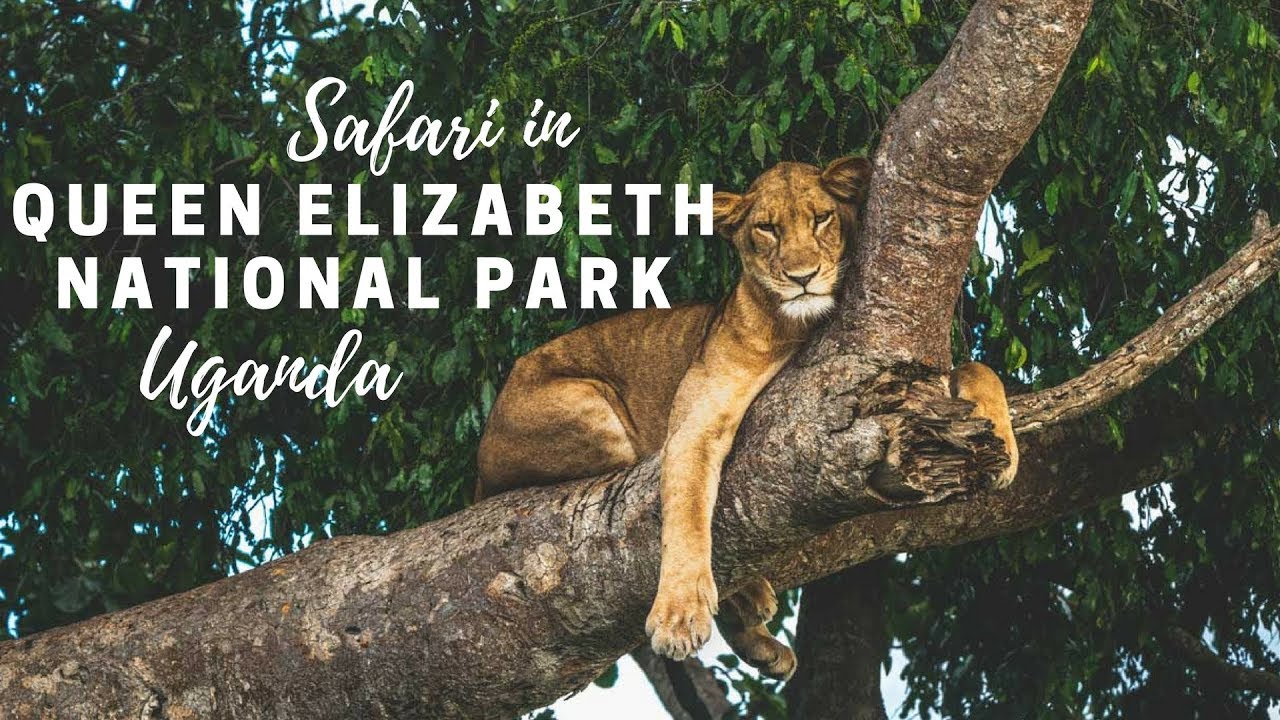
Queen Elizabeth National Park— Guide
Queen Elizabeth National Park – The Medley of Wonders
Nestled in the western arm of Uganda’s Great Rift Valley, Queen Elizabeth National Park is one of the country’s most iconic safari destinations. Spanning nearly 1,978 square kilometers, the park is a masterpiece of contrasts — sweeping savannahs, glistening crater lakes, lush wetlands, and dense forests all come together to form a breathtaking mosaic of ecosystems. It is a place where the raw beauty of African wilderness meets the serene rhythm of nature, earning its reputation as a true “Medley of Wonders.”
A Landscape of Remarkable Diversity
Queen Elizabeth National Park stretches from the snow-capped peaks of the Rwenzori Mountains in the north to the volcanic plains bordering Lake Edward in the south. Its landscapes are beautifully varied — open grasslands, acacia woodlands, dense forests, and the glimmering waters of the Kazinga Channel that links Lake George and Lake Edward.
The park’s unique ecological blend supports an incredible range of wildlife and makes it one of Uganda’s most biodiverse areas. From wide-open game drives to boat cruises and primate walks, every corner of Queen Elizabeth offers a new and thrilling encounter.
Wildlife – The Kingdom of Abundance
Queen Elizabeth is home to 95 mammal species and over 600 bird species, making it a paradise for wildlife lovers and birdwatchers alike. On the open plains of Kasese and Kasese-Katwe, elephants, buffaloes, Uganda kobs, and waterbucks graze peacefully, while lions and leopards prowl nearby.
In the park’s southern sector — Ishasha — visitors find one of Africa’s rarest sights: the tree-climbing lions. These majestic cats rest gracefully in the branches of fig and acacia trees, a behavior seen in very few places on Earth. Spotting them against the golden savannah backdrop is one of Uganda’s most sought-after photographic moments.
Along the Kazinga Channel, wildlife flourishes in abundance. The channel’s banks teem with hippos, crocodiles, elephants, and hundreds of waterbirds — from African fish eagles to pink-backed pelicans.
The Kazinga Channel Boat Cruise – Nature’s Grand Stage
A highlight of Queen Elizabeth National Park is the Kazinga Channel boat cruise, one of the most scenic and rewarding wildlife experiences in Uganda. The two-hour voyage glides along calm waters, offering close-up views of elephants bathing, buffaloes cooling off, and families of hippos grunting in the shallows.
Birdlife here is spectacular — African jacanas, kingfishers, cormorants, and bee-eaters decorate the channel’s edges, while the vast horizon reflects the colors of sunset. It’s an experience of peace and vitality all at once, and one that leaves travelers with lasting memories of the park’s vibrant ecosystem.
Kyambura Gorge – The Valley of the Apes
Hidden within the eastern part of the park lies Kyambura Gorge, a lush, forested canyon carved by the Kyambura River. Often called the “Valley of the Apes,” this mysterious gorge is home to a small but fascinating community of chimpanzees.
Chimpanzee trekking here offers a different kind of adventure — descending into the cool, green depths of the gorge to follow their calls through the treetops. While sightings are not guaranteed, the trek itself is an immersive experience, revealing stunning vegetation, monkeys, and birdlife along the way.
Exploring the Crater Lakes and Scenic Drives
The northern region of the park is dotted with volcanic craters and panoramic viewpoints. The Katwe Explosion Craters and Ndali-Kasenda Crater Field offer breathtaking landscapes that seem to stretch endlessly. These ancient volcanic features, now filled with water or forest, create a dramatic contrast to the surrounding plains.
The Mweya Peninsula, situated between the Kazinga Channel and Lake Edward, is the park’s central hub. It provides sweeping views of the channel and serves as an excellent base for game drives and boat safaris.
Cultural Encounters and Community Tourism
Queen Elizabeth National Park is surrounded by rich cultural heritage. Visitors can engage with nearby communities to experience traditional music, dance, storytelling, and crafts. The Kikorongo Women’s Community, for instance, offers workshops in basket weaving and African cooking.
Cultural tours not only deepen the safari experience but also ensure that tourism directly benefits the people who share their land with wildlife.
Birdwatching – A Paradise for Ornithologists
With over 600 recorded bird species, Queen Elizabeth is one of the best birding destinations in East Africa. Its diverse habitats — lakes, forests, and wetlands — attract an astonishing variety of species, including:
African fish eagle
Grey-headed kingfisher
Shoebill stork (in nearby wetlands)
Black bee-eater
Martial eagle
Malachite kingfisher
African skimmer
The months between November and April are particularly rewarding for birdwatchers, as migratory species join the park’s residents.
Best Time to Visit Queen Elizabeth National Park
The park is open year-round, but the dry seasons (June to September and December to February) are best for game viewing, as animals gather around water sources and trails are easier to navigate.
The wet seasons (March–May and October–November) bring lush greenery and excellent birding conditions, though some areas may become muddy.
Getting There
Queen Elizabeth National Park lies about 400 kilometers (6–7 hours by road) southwest of Kampala. Travelers can also fly to nearby Kasese or Mweya Airstrip from Entebbe for a faster journey.
The park connects easily to other major destinations, including Bwindi Impenetrable Forest for gorilla trekking and Kibale National Park for chimpanzee tracking — making it an essential stop on any Uganda safari circuit.
Accommodation Options
From luxury lodges with panoramic river views to cozy mid-range camps and budget-friendly stays, Queen Elizabeth National Park offers something for every traveler. Many lodges overlook the Kazinga Channel or sit on scenic ridges, allowing visitors to wake up to the sounds of birds and distant wildlife calls.
Evenings around the campfire bring stories, starlight, and the serenity of the wild.
Conservation and Heritage
Established in 1952, Queen Elizabeth National Park stands as a testament to Uganda’s commitment to wildlife conservation. It is part of the Queen Elizabeth Biosphere Reserve, recognized by UNESCO for balancing ecological preservation with sustainable community development.
Through responsible tourism, the park continues to support local livelihoods, protect wildlife corridors, and sustain Uganda’s remarkable biodiversity.




